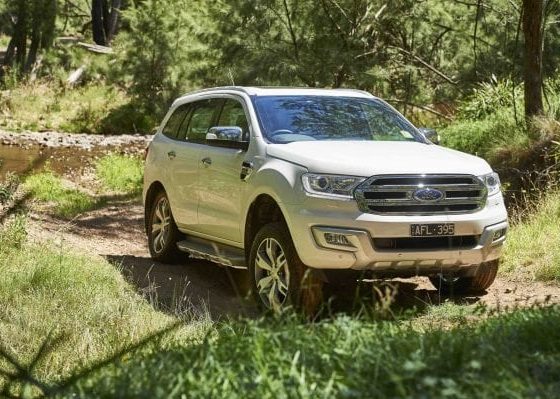A long, hot Australian summer proves to become a big test for your vehicle every year, and can often cause engine overheating. A blazing sun and stinking-hot ambient temperatures put things under big pressure, and can show up big problems that were dormant over winter. Here are our tips for stopping your engine from overheating in an Australian summer.
Check your coolant
This one is pretty obvious, right? Before you start the car, check how much coolant there is in the system, and be critical of what sort of condition it is in. Coolant doesn’t last forever, and should ideally be changed every 12-24 months. If it’s full of sludge and scale, the radiator’s ability to cool is severely diminished, and you have a one-way ticket to engine overheating. You’ll need to give your system a good, proper flush out and clean, or replace the major parts.
Check your hoses

Yeah, yeah, your 4X4 might have been the poster-boy of reliability over winter. Give yourself a few 40 degree days though, and watch as mother nature sorts the wheat from the chaff. When ambient temperatures skyrocket those old, brittle hoses that have been just hanging in there might cark it completely. What’s the solution? Inspect the condition of your hoses thoroughly, they should be supple, black and crack-free. If not, they need replacement.
Look for leaks
The dye in your coolant these days will leave a tell-tale sign if it has escaped the system. Look for streaks of chalky residue around the engine bay, especially around hose ends and gaskets. Plastic coolant reservoirs can spring a leak, as well as radiators (especially if they have plastic ends on them). Leaks are only going to get worse, so take care of the problem before it takes care of you.
What’s your fan like?

Viscous? Thermo? Don’t know the difference? Time to learn, and check that it’s doing a proper job. The fan will pull air through the radiator, which is a vital part of it pulling heat away from the engine block. If your viscous couple is low on oil or just plain worn out, or your thermo-fan is ready for retirement, this would be the chief cause of an engine overheating.
Don’t trust your factory gauge (so much)
Your engine has a pretty wide and fluctuating operating temperature in the real world. Factory temperature gauges are designed to sit pretty constant in the middle throughout this, so don’t think a stationary needle means your engine temperature is rock-solid. The second your gauge starts creeping up towards the red, you know there is something happening.
Go easy
Engines produce the most heat when working hard under load. This is exacerbated on hot days: radiators can’t pull as much heat away from the engine, and the hot air going into the combustion chamber means the engine is working harder for power. Solution? Take it easy. Reduce your speed a bit, and let the poor old thing coast up hills without as much pressure.
Carry extra water and coolant (and other stuff)

I have four 1-litre water bottles in the back of my car permanently. Two have demineralised water, and two have a coolant mixture. If problems do occur, this might allow you to sort them out on the spot. Also, you should carry some spare hose clamps and a roll of Rescue Tape.
… and if it gets hot …
Slow down (or stop)
It depends on how bad things are getting, but you need to considering getting off the road if your engine is starting to overheat. A lack of airflow in stop-start traffic could be making things worse, as could heavy loads of towing or heading up-hill. If you can coast along at 50-odd kilometres for a while, it might be enough to stop the engine overheating. If not, find yourself some shade, grab that old paperback out of the glovebox, and give your poor old motor a breather.
Turn off the aircon

The air conditioning on your car is a big parasitic load on the engine, which makes it work harder. You and your passengers might not like it, but if you’re heading towards overheating territory, turn off the aircon!
Turn on the heater
Oh no. Now you’re going to be really unpopular. With the aircon off, turn on the heater function and fan to full-ball. Point them straight out the window, and take solace in the fact that the hot air pouring out of the vents and making you sweat profusely is cooling the engine off a bit.
Don’t open the cooling system!
Don’t be tempted to do a coolant top-up when the engine is hot. Coolant systems are pressurised, which stops the contents of the system from boiling. Open any cap or relieve that pressure, and very hot water will fly out in all directions, burning any skin nearby. If your system needs a top-up, you’ll have to be patient and wait for the system to cool down, which will reduce the internal pressure and inherent dangers that come with it.
Things to check on an overheating engine
Coolant
If you don’t know how old it is, splash out on some fresh stuff and replace it. Give your system a good flush, while you’re at it!

Thermostat
The thermostat sits somewhere in between your engine block and radiator, and restricts coolant flow when your engine is cold. As it heats up, the thermostat opens up, and allows coolant to flow into the radiator. If it plays up, it can cause plenty of problems.
Radiator
Check for external problems, to start with. Are the cooling fins blocked with debris or damaged and bent? This will make a big negative impact on it’s performance. Sludging up will cause problems inside as well, popping your top and bottom hoses, and flushing it with clean water will indicate what the contents are like.
Water pump
A strong water pump will push good volumes of water through your cooling system, ensuring it’s going full-tilt. These are a long-term service item, however. They can clog up with scale and debris, the impellers can wear out, or the bearing can let go. If it’s on the way out, you’ll have an engine overheating. If it springs a leak, it’s time for a replacement.













